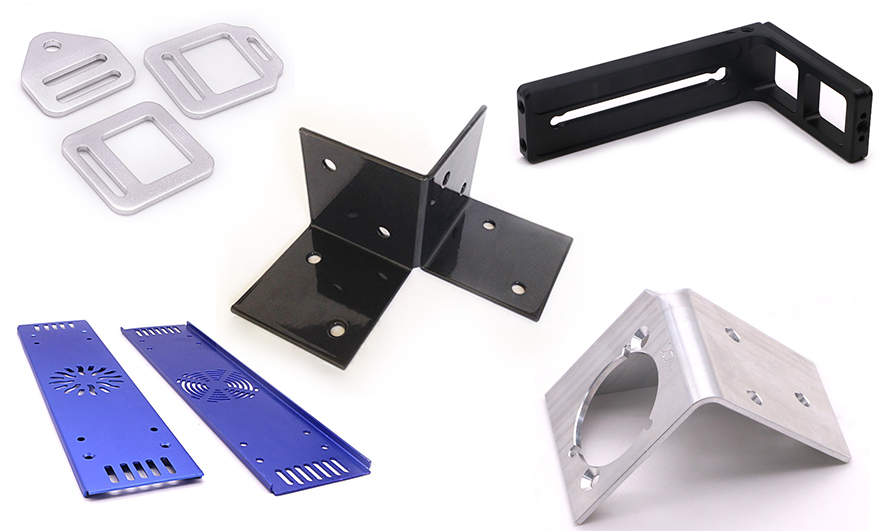15 years one-stop China custom CNC machining parts factory

Hey there I’m VMT Sam!
With 25 years of CNC machining experience we are committed to helping clients overcome 10000 complex part-processing challenges all to contribute to a better life through intelligent manufacturing. Contact us now
 148 |
Published by VMT at Jul 14 2022
148 |
Published by VMT at Jul 14 2022
What are sheet metal CNC machining parts?
Sheet metal CNC machining parts are thin-plate CNC machined parts, that is, parts that can be processed by stamping, bending, stretching and other means.
Process flow of sheet metal CNC machining parts
Overview of sheet metal CNC machining
Sheet metal processing is called sheet metal CNC machining. Specifically, for example, the use of plates to make chimneys, iron drums, fuel tanks and oil cans, ventilation pipes, elbows and heads, Tianyuan places, funnel shapes, etc., the main processes are cutting, bending, bending, bending, welding, riveting, etc. Some knowledge of geometry. Sheet metal CNC machining parts are thin-plate hardware, that is, parts that can be processed by stamping, bending, stretching, etc. A general definition is a part whose thickness does not change during CNC machining. Forging parts, machined parts, etc. Selection of sheet metal processing materials The commonly used materials for sheet metal processing are cold-rolled sheet (SPCC), hot-rolled sheet (SHCC), galvanized sheet (SECC, SGCC), copper (CU) brass, red copper, beryllium copper, Aluminum plate (6061, 6063, hard aluminum, etc.), according to the function of the product, the material used is different, generally need to consider the use and cost of the product.

Sheet metal CNC machining
1. Cold-rolled sheet SPCC, mainly used for electroplating and baking paint, low cost, easy to form, material thickness ≤ 3.2mm.
2. Hot-rolled sheet SHCC, material T≥3.0mm, also uses electroplating and paint parts, low cost, but difficult to form, mainly flat parts.
3. Galvanized sheet SECC, SGCC. The SECC electrolytic plate is divided into N material and P material. The N material is mainly used for surface treatment, and the cost is high. The P material is used for sprayed parts.
4. Copper; mainly used for conductive materials, and its surface treatment is nickel-plated, chrome-plated, or no treatment, and the cost is high.
5. Aluminum plate; generally use surface chromate (J11-A), oxidation (conductive oxidation, chemical oxidation), high cost, silver plating, nickel plating.
6. Aluminum profile; material with complex cross-sectional structure, which is widely used in various boxes, and the surface treatment is the same as that of aluminum plate.
Precautions for the expansion of sheet metal CNC machining parts:
1. The expansion method should be suitable, and it should be convenient to save materials and CNC processability.
2. Reasonably choose the gap and wrapping method, the gap below T=2.0 is 0.2, the gap between T=2-3 is 0.5, and the wrapping method adopts the long side to wrap the short side (door panels)
3. Reasonable consideration of tolerance dimensions: the negative difference goes to the end, the positive difference goes halfway; the hole size: the positive difference goes to the end, and the negative difference goes halfway.

Process flow of sheet metal CNC machining parts
Blanking: There are various methods of blanking, mainly in the following ways
①. Shearing machine: It uses shearing machine to cut simple pieces of strip material. It is mainly prepared for mold blanking and forming. The cost is low and the precision is lower than 0.2, but it can only process strips or blocks without holes and corners.
②. Punching machine: It is to use the punching machine to punch out the flat parts after unfolding the parts on the plate in one or more steps to form various shapes of materials. But to design the mold.
③. CNC blanking, when CNC blanking, it is necessary to write a numerical control machining program first, and use programming software to write the drawn expansion diagram into a program that can be recognized by the NC digital drawing machine, and let it punch each step on the flat plate according to these programs. Constructed flat plate, but its structure is affected by the tool structure, the cost is low, and the accuracy is less than 0.15.
④. Laser cutting is to use laser cutting method to cut the structure and shape of the plate on a large plate. Like NC cutting, a laser program needs to be written. It can cut flat parts of various complex shapes. The cost is high and the precision is less than 0.1 .
Ready To Start Your Next Project?
Get Instant Quote

Request a Free Quote
Send us a message if you have any questions or request a quote. We will get back to you ASAP!